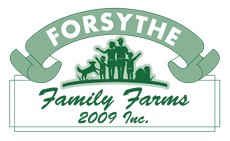Terroir
In this newsletter we are going to take a closer look at the four factors that influence terroir.
Terroir is the idea that food has specific qualities influenced by place (soil and climate) the seeds, and the farming practices.
There is no truer expression of a region’s unique combination of geography and climate, than the food grown in it’s soils”.: ~unknown
The Soil
Our farm sits on 50 acres of rolling hills with sandy loam soil. The North side of the farm tucks into a cedar bog, the headlands of a stream.
Sandy loam soils have visible particles of sand mixed into the soil and that gives them a gritty feel. When sandy loams soils are compressed, they hold their shape but break apart easily.
The Water
Our farm has a small pond that is fed by a natural spring. This water is used for irrigation if there is not enough rain. The water on the farm primarily runs off to the north and into the Kawartha Watershed. Some of the fields are tiled a method of underground drainage that helps remove excess water from the surface and the plants roots. This was especially helpful with last year’s record rainfalls. Plants need water but can drown if there is too much.
The Seed
Farmer Jim is quite particular when choosing his seeds and is always on the lookout for new varieties to try. First and foremost he looks for varieties that provide good flavour, yield well and are grown for fresh market sales as opposed to those grown for shipping long distances. Beauty of the produce has no value if it doesn’t have flavour as noted with his favourite strawberry the Cavendish.
For tomatoes, he gave up on growing heirloom varieties as they were susceptible to disease and became soft within a day of picking. He grows varieties that are flavourful and firm so that they can handle being transported to market.
The Climate
Our farm is higher in elevation as you will see on your visit which means it is cooler and windier than the GTA and southwestern Ontario. Our crops are harvested a bit later and we have a shorter growing season.
Ontario’s climate can be un-predictable. This year we experienced a late spring, last summer we had too much rain. Who knows what this season will bring? But whatever Mother Nature gives us Farmer Jim is prepared to handle it.
The Farmer (Farming practices)
With over 42 years of farming experience behind him, Farmer Jim grows with confidence using a combination of past experience and best practices.
Forsythe Family Farms 2009 Inc. is a small farm. Combinations of manual and mechanized practices are used to cultivate plant and harvest our crops. Manual labour makes up a large portion of our farming practices due to the economy of scale of our production and the end use of our fruits and vegetables. They need to be hand -picked for quality as they are for eating fresh and not for the processing market.
With the help of a small tractor Farmer Jim can weed some of the fields, while others need to be weeded by hand.
For pest control Farmer Jim uses Integrated Pest Management (IPM), a practice where he scouts the fields for pests. If pests or diseases are found he then determines the economic impact of spraying or leaving the crop alone. Ultimately he does not want to spray but on the flip side he does not want to lose his crop.
Since we only service the regions of York and Durham we only pick our crops at the height of freshness.
In the Fields
Another batch of peas and beans has been planted. Farmer Jim staggers the plantings over the weeks of spring and summer so we can continue to provide you with fresh produce for a longer period of time. Each planting can be picked for about 2 weeks before the crop is too mature.
A new field of Farmer Jim’s favorite – the Cavendish strawberry was planted this week.
Our asparagus is at the height of the season. Try it in an omelet – delicious!
Rhubarb is being harvested. We have frozen some – getting ready for jam making season when the strawberries are ready.
Rhubarb Coffee Cake
- 1 1/4 cups white sugar
- 1 teaspoon baking soda
- 1/2 teaspoon salt
- 2 cups all-purpose flour
- 2 eggs, beaten
- 1 cup sour cream
- 3 cups diced rhubarb
- 1 cup white sugar
- 1/4 cup butter, softened
- 1/4 cup all-purpose flour
- ground cinnamon, for dusting
Directions
- Preheat the oven to 350 degrees F (175 degrees C). Grease and flour a 9×13 inch baking dish.
- In a large bowl, stir together 1 1/4 cups sugar, baking soda, salt and 2 cups flour. Stir in the eggs and sour cream until smooth, then fold in the rhubarb. Pour into the prepared dish and spread evenly. In a smaller bowl, stir together the remaining 1 cup sugar and butter until smooth. Stir in 1/4 cup flour until the mixture is crumbly. Sprinkle the mixture on top of the cake then dust lightly with cinnamon.
- Bake in the preheated oven until a toothpick inserted in the center comes out clean, about 45 minutes.
ALL RIGHTS RESERVED © 2018 Allrecipes.com
Easy Roasted Asparagus
reheat the oven to 400 degrees F.
Break off the tough ends of the asparagus. Place the asparagus on a baking sheet, drizzle with olive oil, then toss to coat the asparagus completely. Spread the asparagus in a single layer and sprinkle liberally with salt and pepper. Roast the asparagus for 25 minutes, until tender but still crisp.
Alternately, spread spears tossed in olive oil over the grill turning often. Grill for 20 minutes.
